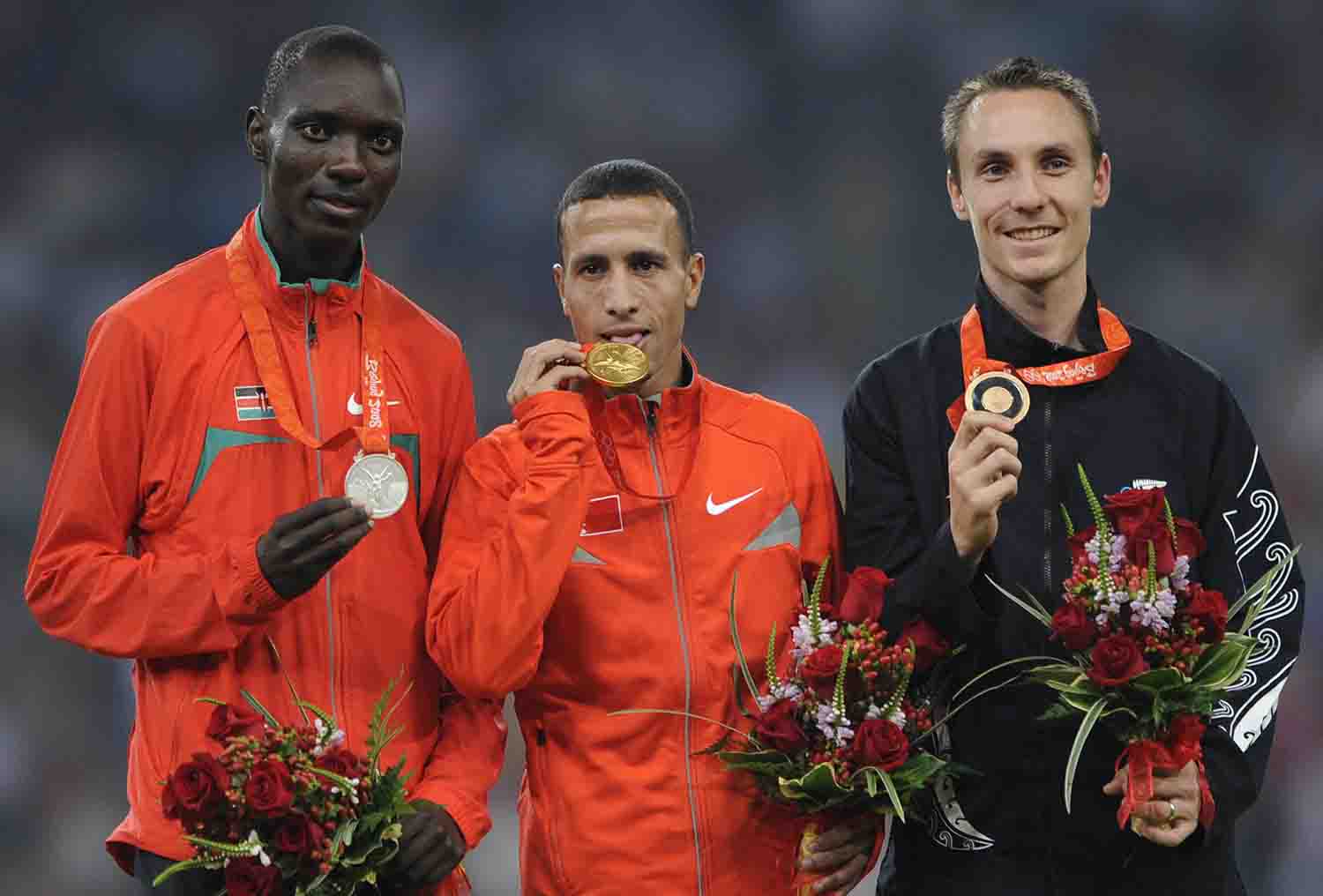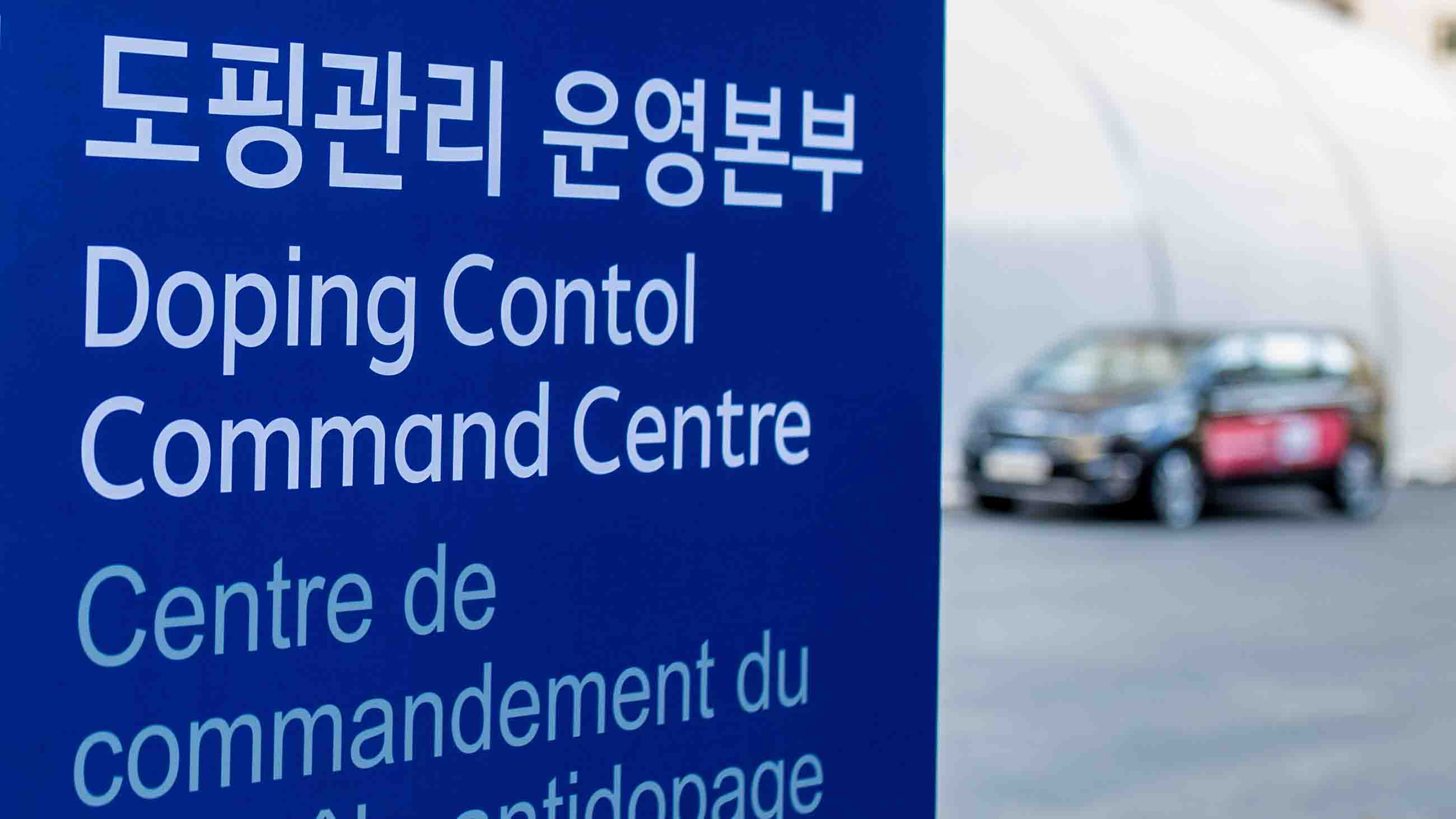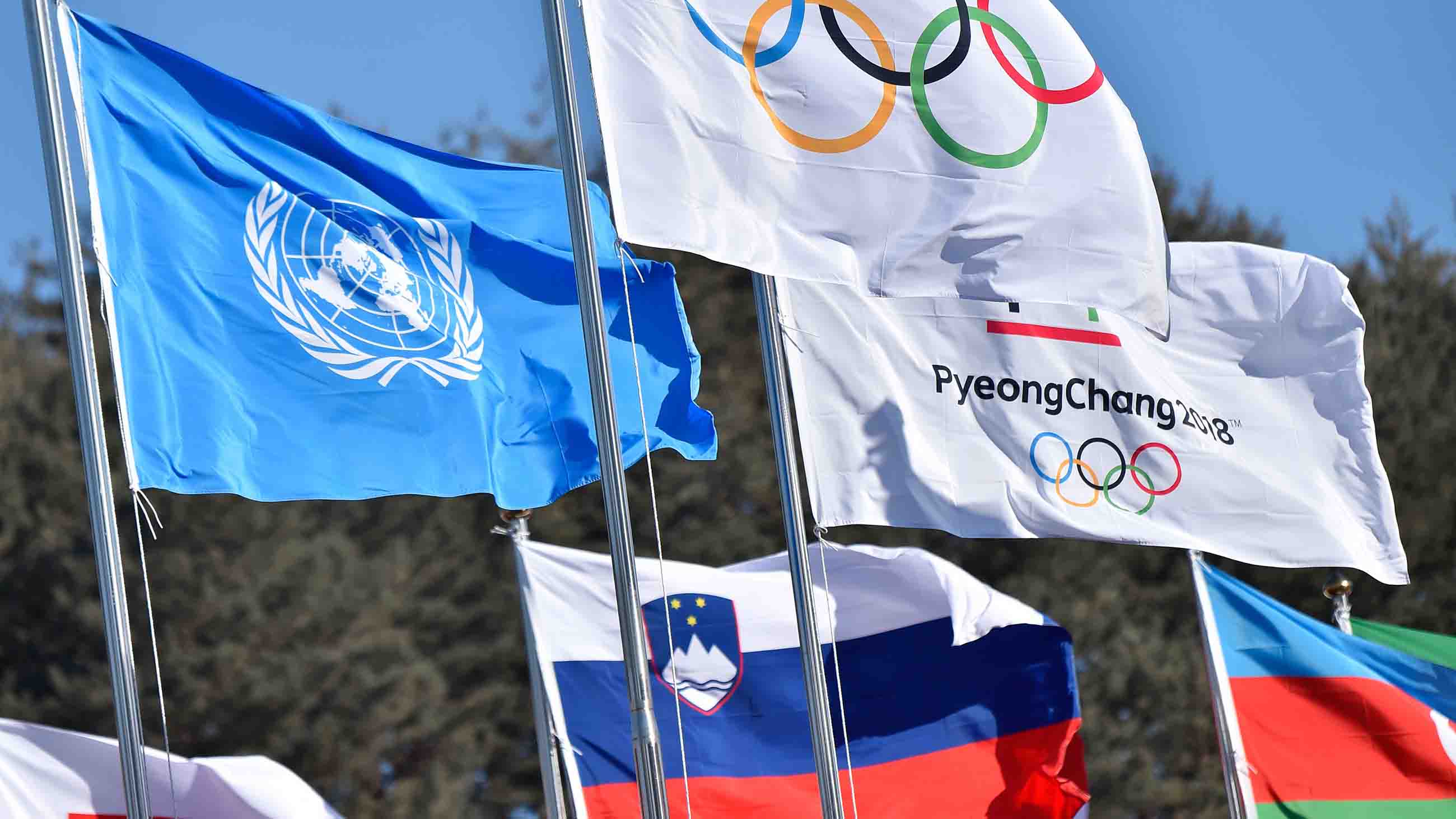Amid Olympic Anti-Doping Efforts, Calls for a More Sociological Approach
At the 2018 Winter Olympics, which get underway this weekend in Pyeongchang, South Korea, officials are planning a Herculean — and expensive — effort to ensure that participating athletes do not taint the games through the use of performance enhancing drugs. The Doping Control Center at the Korea Institute of Science and Technology estimates that it will analyze roughly 3,000 samples during the two-week event, and to achieve swift results, 165 staff members will work in shifts around the clock.
Since the last time South Korea hosted an Olympics in 1988, scientists have identified hundreds of potentially performance enhancing substances and masking agents, which can now be detected at exquisitely low concentrations in athletes’ blood and urine. Mass spectrometry is now so sensitive that researchers can detect substances at minuscule dilutions — the equivalent of detecting a sugar cube dissolved in an Olympic-sized swimming pool. And today, elite athletes routinely submit samples before, during, and after most major competitions, including the Olympics, so that their biomarkers — hemoglobin, hematocrit, immature red blood cells — can be tracked over time. Athlete samples from this year’s Olympics (and from past Olympics) will be stored for 10 years, and continually rechecked as new tests become available.
And yet for all the testing and tracking, administrators, sports fans, and, perhaps most importantly, athletes themselves, say it isn’t enough. Too often, doping athletes are one step ahead of the tests, so they don’t get caught, or they get caught long after medals have been awarded. Additionally, they say that athletes aren’t checked often enough, and the system isn’t applied uniformly across the globe. “You’re never going to build a robust enough test that’s going to address the issue that anti-doping is trying to address,” says John Gleaves, co-director of the International Network of Doping Research, and an associate professor at California State University, Fullerton.
“We have to understand human nature. We have to understand the social dynamics, the social forces at work here,” he added.
A growing number of social scientists, administrators, and even laboratory directors agree. Their message: In addition to laboratory testing, a psychosocial approach is needed, and anti-doping efforts should not rely solely on fear of getting caught. Many experts now advocate for what’s referred to as “values-based” or “community-based” interventions that support athletes as partners in prevention — not simply as subjects to be policed. When asked to explain their decision not to dope, athletes often cite a personal moral compass, which includes values such as honesty and fairness. Finding ways to appeal to and nurture those values in all athletes, many anti-doping activists now say, is likely the best way to curb cheating, and protect the integrity of competition.
Whether these new sociological and psychological approaches can help to reduce the culture of doping that plagues many competitive sports remains an open question, in part because the movement is so young. But experts in the field routinely point to studies showing that the vast majority of athletes want to compete cleanly, and that those who don’t dope are invested in notions of fair play and the “spirit of the game.”
Given this, as well as the high costs and limited effectiveness of traditional, punitive drug testing — a cat-and-mouse game that some athletes will always manage to dodge — the idea is gaining adherents.
“Cultivating the intrinsic values of sport (spirit of sport) leads to positive attitudes toward clean sport,” wrote Andrea Petroczi, a professor of public health at Kingston University in London, in a 2017 paper. “And ultimately athletes and stakeholders become more engaged in their own roles and responsibilities, and thus motivated to keep sport drug-free.”
Kwon Oh-Seung, director of the laboratory overseeing this year’s Olympics, worked at the same laboratory in 1988, when Canadian sprinter Ben Johnson won the 100 meters at the Seoul Olympics, only to be stripped of his medal three days later after testing positive for anabolic steroids. In time, six of the event’s eight finalists would be implicated in doping scandals. Johnson’s positive laboratory test marked a turning point in public awareness of doping in sports, though it would be another 12 years before the creation of the World Anti-Doping Agency (WADA), an independent international agency funded by sports federations and national governments. WADA is responsible for developing and monitoring the World Anti-Doping Code, and for funding research, developing education, and accrediting laboratories such as Kwon’s.
Kwon says that detection is important, but costly. Precise figures for this year’s Olympics are unavailable, but in the U.S., the cost for collection and analysis ranges from $200 to $1,000 per test. “We can’t cover every athlete,” says Kwon. Instead, the Olympic laboratory will test a portion of athletes with the idea that monitoring and detection will lead to deterrence. This approach has been compared with the use of police cars strategically placed along highways to slow traffic. The police may not catch every speeder in a city, but their presence, or the possibility of their presence, helps slow traffic.
“What we’re trying to achieve is not catching every single athlete that’s doping,” says Matt Fedoruk, science director for the U.S. Anti-Doping Agency, the national testing authority for American athletes. “If that’s our focus we’re never going to be successful.” Instead, the goal of anti-doping agencies worldwide is to deter athletes from doping in the first place.
According to Fedoruk, athletes can be classified into three types: the “incorrigibles,” like Lance Armstrong, who will always dope because they see the rewards as much higher than the risk of getting caught. Then, there’s a large population of athletes who will never dope, no matter what. Finally, there’s a middle ground, a population he refers to as the “deterrables,” who could go either way depending on the cost-benefit analysis placed in front of them. That’s the population they’re hoping to dissuade with traditional drug testing — which has taken on a complexity that may surprise the casual sports fan.
New Zealand runner and four-time Olympian Nick Willis is part of a registered testing pool. Athletes in this pool must provide their whereabouts 365 days a year so they can be available for testing at a moment’s notice. Wherever he goes — visiting family, a weekend getaway — Willis must log on to the system and indicate where he’ll be staying that night so that anti-doping officials, should they decide to conduct a test, can find him. Athletes must choose a specific 60-minute time slot when they will be available at their designated location to provide a sample of urine, blood, or both. Three missed tests within a given period is considered a doping violation.
“Sometimes you get a rude awakening,” says Willis, who chose 6 a.m. so he wouldn’t be in the midst of daily activities when the testers arrive. He’s not complaining, though. He supports testing if it means his competitors don’t have a free pass. In the 2008 Summer Olympics, Willis crossed the finish line third in the 1500 meters and received a bronze medal. Less than a year later, his medal was upgraded to silver when the race winner tested positive for a prohibited substance.
It’s widely acknowledged that there are blind spots in the system. In particular, critics maintain that it is difficult to effectively carry out testing in countries with small budgets and little infrastructure. These places offer a potential loophole, not just for domestic athletes, but also for international athletes who go there to train.
“We have progressed so far with our tests,” says Gleaves, and yet “the problem has stayed stubborn.”

It’s difficult to determine just how prevalent sports doping is. Annual testing figures issued by WADA suggest a rate of roughly 1 to 2 percent, though this may not be a reliable indicator. Among other things, a higher detection rate may simply be a sign of a country’s commitment to clean sport: Running more tests provides more opportunities to uncover doping. Tony Cunningham, the senior manager for education at WADA, says that surveys suggest “the prevalence of doping could be up to 10 percent or more in certain sports.” A different analysis used at two international sporting events in 2011 estimated the prevalence of past-year doping at 43 and 57 percent, respectively. Cunningham says it’s clear that doping prevalence varies by country, but he can’t say to what degree. (WADA established a working group last year to look into it.)
This lack of certainty makes better understanding the motivations of athletes — both those who do dope, and those who don’t — all the more imperative. “It’s very easy for people to say athletes dope because they want to win more money, because they want to be successful, because they want fame,” Cunningham says. But studies conducted by social scientists who specialize in anti-doping paint a more nuanced picture. Athletes are more likely to dope, for example, during major life transitions — moving from college, or to a professional team — or during times of injury or after a disappointing performance.
Public scrutiny and media coverage of doping scandals also create the impression that doping is more widespread in professional sports than it actually is, Cunningham added in a follow-up email, which can have a perpetuating effect.
“The more people think that other people are doping,” he says, “the more likely they are to dope themselves.”
On the other side of the coin, researchers are increasingly studying athletes who don’t dope, trying to better understand their motivations. These athletes report that drug testing and traditional anti-doping education do not play a significant role in their decision to compete cleanly. Rather, they often cite a personal moral compass, and the shame they would feel if caught.
“The data suggest really clearly that athletes overwhelmingly cite a desire to do their sport without performance enhancing substances,” says Matt Englar-Carlson, a professor in the Department of Counseling at California State University, Fullerton. He and John Gleaves are studying professional cyclists who compete without doping. Ideally, as researchers continue to learn about how clean athletes operate, they can develop methods for promoting these healthy behaviors, and building resilience that athletes can draw upon — particularly in times of vulnerability.
It’s an admirable goal, though one with a significant hurdle: money.
Designing interventions and evaluating their effectiveness is expensive. It requires tracking people over time, recording their experiences, and applying interventions in order to assess their impact. WADA’s Cunningham estimates that a single cohort study like this would require millions of dollars. And yet, his organization — the biggest global funder of anti-doping social science research — has a dedicated fund of just $300,000 per year. As such, the vast majority of WADA’s research spending goes toward better testing, rather than prevention informed by social science.
That may in part be due to a countervailing value that most competitive athletes hold dear: performance enhancement.
At a fundamental level, says Kingston University’s Petroczi, elite athletes continually strive to improve their performance — to run faster, throw farther, complete a more perfect routine. When they fall short of their goals — and all athletes sometimes fall short — high-performing competitors need to develop healthier coping skills.
To this end, Petroczi has worked with colleagues to develop several interventions, including an eLearning course called ALPHA — short for Athlete Learning Program about Health and Anti-Doping. The program, provided by WADA free of charge, offers traditional education on subjects including the doping testing process, while also acknowledging athletes’ desire for performance enhancement. The goal is to help athletes become more aware of situations that might make them vulnerable to doping, and then to offer viable alternatives. For example, athletes are encouraged to consider adopting rest and recovery as their response to injury, rather than using a prohibited substance to push through.

Of course, an eLearning course would do little to curb the sort of widespread and state-sponsored doping that led the International Olympic Committee to ban Russia from officially competing in this month’s games. But social science may prove useful here, too. Kelsey Erickson, a research fellow who studies drug use in sport at Leeds Beckett University in the U.K., found in her Ph.D. research that while student-athletes were largely opposed to personally doping in sports, fewer than half said they would report someone else for doping.
Among those who would take action, few preferred “whistleblowing,” or reporting to authorities. Instead, most said they would rather confront the athlete personally or tell a coach. Based on these findings, Erickson concluded that confrontation and dialog might be an additional way for athletes to protect clean sport, and she and her colleagues have developed an anti-doping intervention program called RE>ACT — short for Recognize and Take Action. The goal, she says, is to give athletes the tools and confidence to intervene if they know a teammate or competitor is doping — “an additional means of getting involved beyond strictly whistleblowing.”
More than 600 student-athletes in the U.S., Canada, and the U.K. have taken part in RE>ACT workshops as part of a study that has received funding from the International Olympic Committee. During the sessions, students work through scenarios — you’re in a gym and see someone using a pre-workout supplement that you know contains a banned ingredient, but you don’t know if they’re aware; what do you do? — and then practice confronting and being confronted.
“The more we can practice it and have these conversations on the front end, the more likely they are to actually step in and intervene if and when they are faced with a similar situation,” says Erickson. Effectiveness is measured by a series of evaluations. An active control group receives traditional anti-doping education. The study ends in June, with final results to follow.
In the meantime, it is worth noting that the need for elaborate and expensive testing — and even the push for more social and psychological anti-doping interventions — hint at a more fundamental truth: Too many countries place too much emphasis on extreme performance and victory at all costs, while mostly giving lip service to honorable sportsmanship. Those arguably misplaced priorities can be readily absorbed and internalized by young athletes — and by the time they are asked to provide a urine sample, it is often too late for lessons in fair play. In that light, re-calibrating the value systems that nurture young competitors might do more than any blood test to curb cheating.
In an email message, John Gleaves describes his ideal anti-doping education program for young athletes:
“The program would focus on nutrition and stress management. On values development and passion for the sport,” Gleaves said. “I think we need to work on building resilience and helping athletes with stress management. Maybe even talking to them about failure and how to deal with their careers ending.
“If we thought of anti-doping with kids as more ‘pro-wellness,’ rather than how to avoid getting caught or why they should follow the rules,” he added, “we might end up with athletes more resistant to doping pressures and with skills that translate beyond sport.”
Sara Talpos is a freelance writer whose recent work has been published in Mosaic and the Kenyon Review’s special issue on science writing. Sara has an MFA in creative writing (poetry) and is interested in the connections between science and literature. She taught writing classes at the University of Michigan for ten years.











Comments are automatically closed one year after article publication. Archived comments are below.
I agree that we need to build a culture of resistance to doping, but this analysis is incomplete: there will invariably be some countries that are more permissive about doping or more lax about coming down on dopers than others. We all know Russia has weak rule of law. However, in cycling, it looks like Spain and Italy both have had pretty weak rule of law as well. Say you get culture-based anti-doping programs established worldwide. Spanish athletes are going to hear that they should play clean and report cheats, yet they see their governing authorities being lackadaisical about prosecuting them. That’s going to counteract the message.